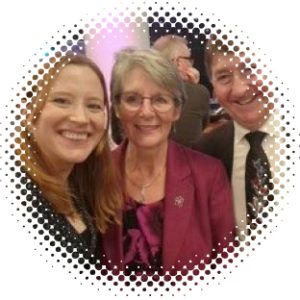In order to showcase the work we do in Pattern-Cog, European project funded by ERA PerMed, we caught up with Pablo Bonilla Escribano, Postdoctoral researcher at Fundación Centro de Investigación de Enfermedades Neurológicas (FCIEN), and asked him a few questions about his work, expectations and challenges.
- Tell us a bit about you and the institution you work for.
Last year I finished my PhD in machine learning at “Universidad Carlos III de Madrid”. My aim was to develop machine learning techniques to automatically and objectively assess the health condition of psychiatric patients. In order to do so, the patients gave their consent to download an app that gathers and anonymises their social interactions via their electronic devices. Those social interactions (such as the use of WhatsApp or phone calls) were used, in turn, to find different patterns associated to particular health conditions.
I currently work at the FCIEN. It is a research foundation devoted to the study of neurological diseases. It is one of the many institutions founded by the “Instituto de Salud Carlos III”, the biggest public research institution in health in Spain.
As a side note, its acronym, FCIEN, means “a hundred”, in Spanish. Physically, the FCIEN is located at the “Centro Alzheimer Fundación Reina”, a nursing home that provides care for patients with mild to advanced dementia. The center receives support from the charity of the Spanish Queen.
There are many projects going on here. For instance, there is a biobank made from the brains of the deceased donor residents of the nursing home. It is used to study the progression of the different neurodegenerative diseases from a biological point of view. The center has its own magnetic resonance image scanner (which will be soon upgraded), and lab, where several protein measurement techniques are performed, such as SIMOA.
- What is the focus of your work within the Pattern-Cog project?
I work in the work package 3 of the Pattern-Cog project. The overarching aim of this work package is to develop machine learning techniques to automatically detect which cognitively healthy (elderly) individuals will develop mild cognitive impairment (MCI).
I must stress that the majority of the current studies focus on predicting the transition from MCI to dementia. However, we aim to identify the vulnerable individuals that will develop MCI while they are still cognitive healthy. Thus, our approach opens up new avenues for interventions when they are potentially more effective.
In order to do so, I make use of the so-called “Vallecas” database. Vallecas is the name of the neighborhood in Madrid where the FCIEN is located. An initial cohort of around 1,200 volunteers has come to the FCIEN every year to have a throughout neurological examination. The evaluations started ten years ago, and they finished this year.
I use the data of those evaluations to train and assess the performance of different algorithms to predict MCI several years before its onset. The dataset involves the volumes of different brain regions (obtained from the processing of MRI), different cognitive/memory tests, and socioeconomic information.
- What do you enjoy the most about your work on the Pattern-Cog project? What do you find most challenging?
There are several features of the project that I like. For instance, it is very rewarding to have the chance to develop a tool that could have a real impact to reduce both the personal and economic burden of neurological disorders. I find research (in general) very exciting, because we are one of the first to increase the bounds of knowledge. When such new knowledge has a real medical application, I think that I has an added value.
Other nice element of the project is the fact that I am learning more about the brain. I have studied anatomy at University during my Bachelor’s degree in Biomedical Engineering, and I have always been fascinated about it. For instance, I find it curious that the hippocampus (i.e., the major memory area) looks like a seahorse. After one year working on this project, I can recognise the most important parts and their associated functions.
I have regular meetings with other members of the Pattern-Cog project, in order to discuss the approaches that we are following to achieve our aims. In this way, I get new ideas. I think that our mutual collaboration is a good example of a multidisciplinary team whose combined result is much more than the sum of the individual contributions. As a result, I am improving my machine learning skills and knowledge.
I would like to highlight the computing resources I have. I have a very powerful computer and access to a cluster. They allow me to run powerful machine learning models which are computationally expensive within a reasonable amount of time.
However, the aims of the project are a challenge. To start with, when comparing healthy people with subjects that are still cognitive healthy but that will develop MCI, the differences are not strong. Hence, without taking careful statistical measures, it is difficult to determine what are reliable patterns that could be used to make generalisable predictions, and what is just “noise”.
To tackle these problems, I am also applying the knowledge and experience I got working in other machine learning projects in the past. For instance, during my master’s degree I developed algorithms to automatically diagnose melanoma using photos of skin moles. In that case, the database contained many more instances of controls than cases of melanoma. In the MCI prediction, the database also contains (fortunately for the participants!) many more examples of people that remain cognitive healthy. Hence, I apply similar corrections techniques to account for the challenging disproportion of the groups in the dataset.
- What are your expectations and what do you think is the importance of the project for the wider field?
I have high expectations in this project, because it was designed with careful care. The scope of this project is not limited to the development of machine learning prediction methods for MCI. That is only the work we do in the work package 3. Indeed, they are other six work packages that strongly work in other aspects of the wilder field of dementia.
For instance, one of the packages focuses on the Public Involvement part, so that the algorithms, and the way their results are presented, meet the expectations of the “final user”. Other package analyses how different screening modalities provide the same results. Other team of the project is combining several MRI databases to understand how the “normal aging” is affecting the brain at the structural level. And of course, other feature that was considered from the very beginning of the project is how to disseminate the achievements.
Once the project is over, I expect to apply the skills that I have learned to take part in other projects that make use of machine learning techniques to improve the wider field of medicine. I would be very happy to make collaborations with the researchers I met during the development of this project.
Because dementia poses a multidomain, complex question, I believe that only adopting a multidomain approach (like the one of this European project) we would be able to provide an appropriate answer to it. I think that this project is important in the wider field because it shows a canonical, organised and multidisciplinary way of addressing a medical problem.

















